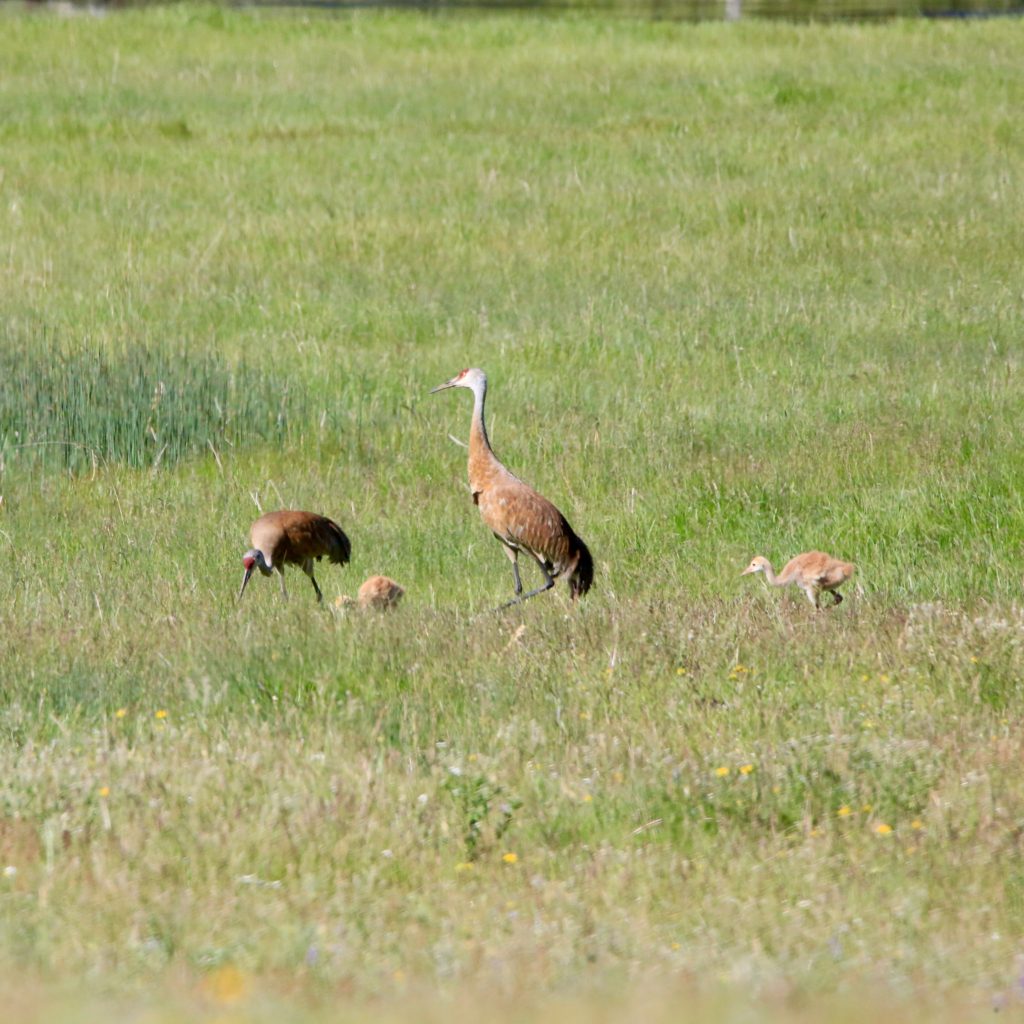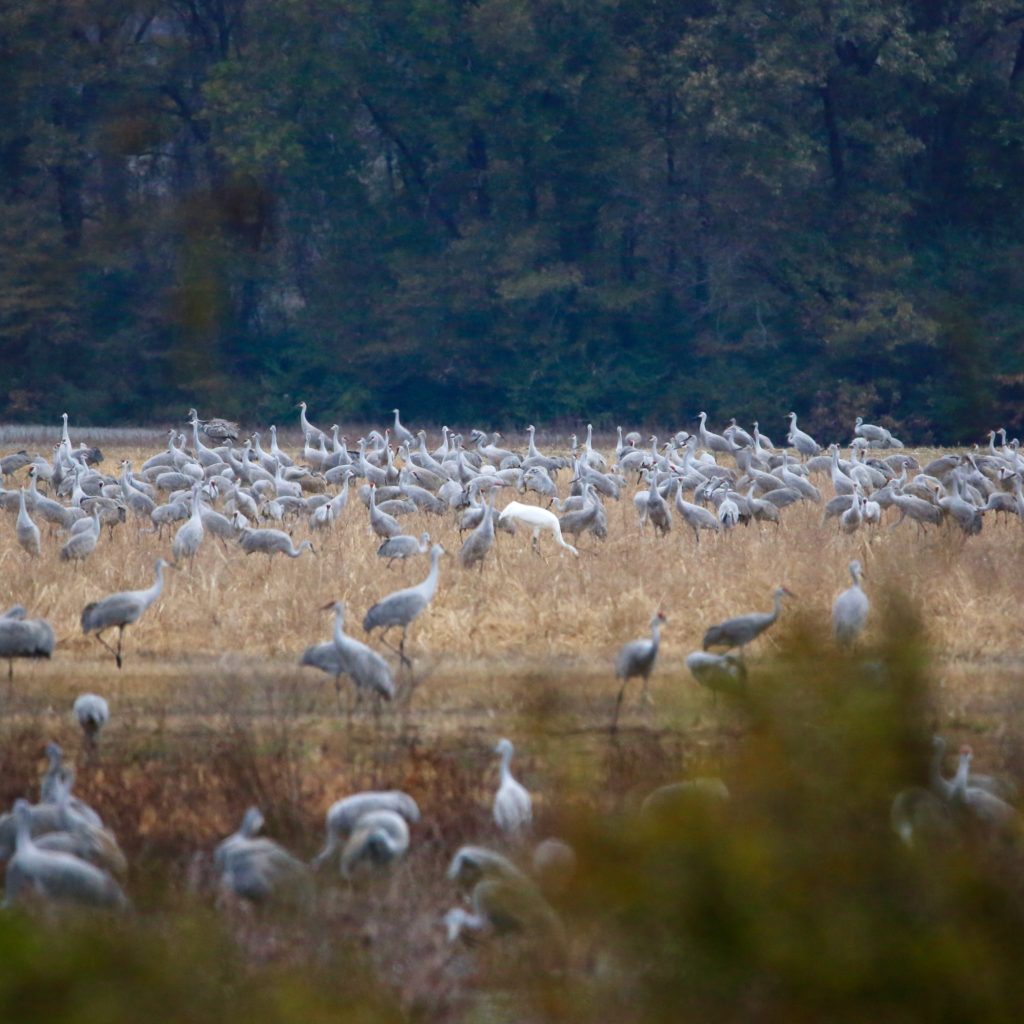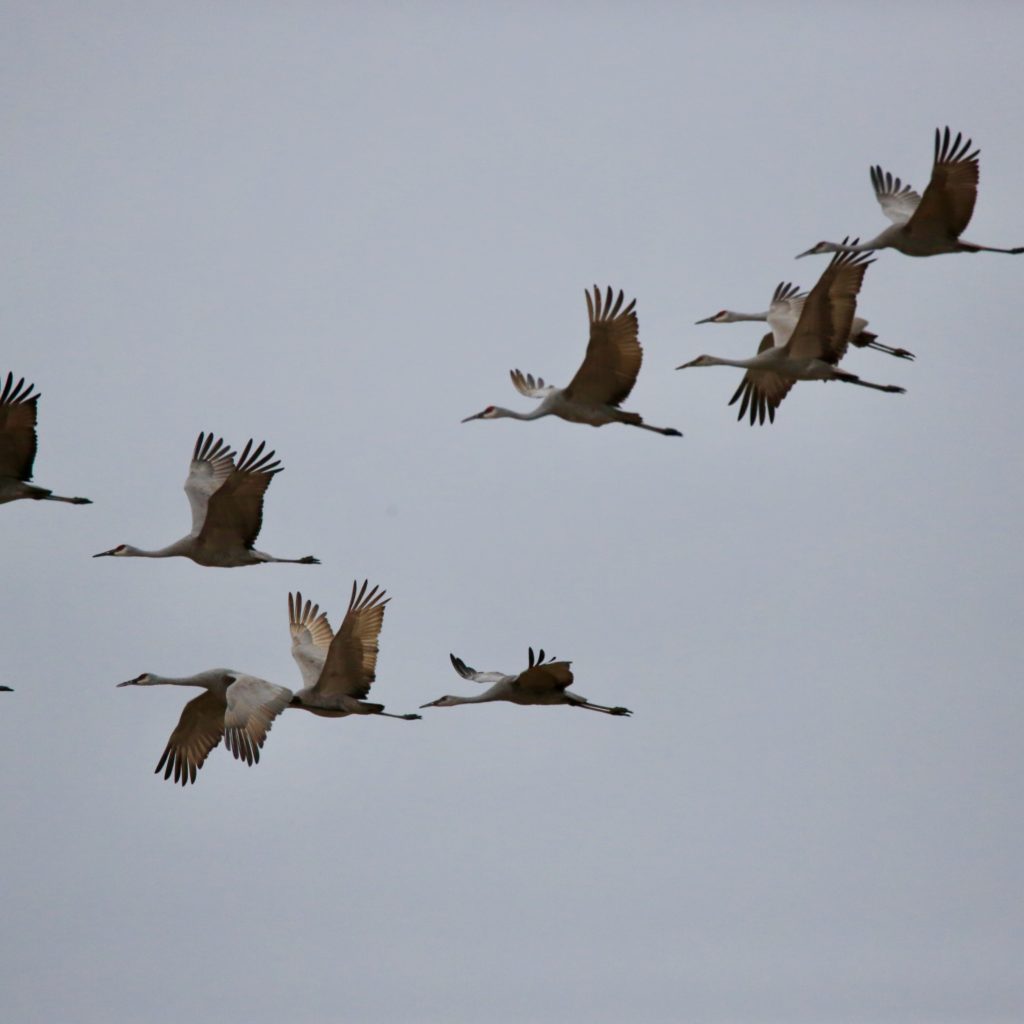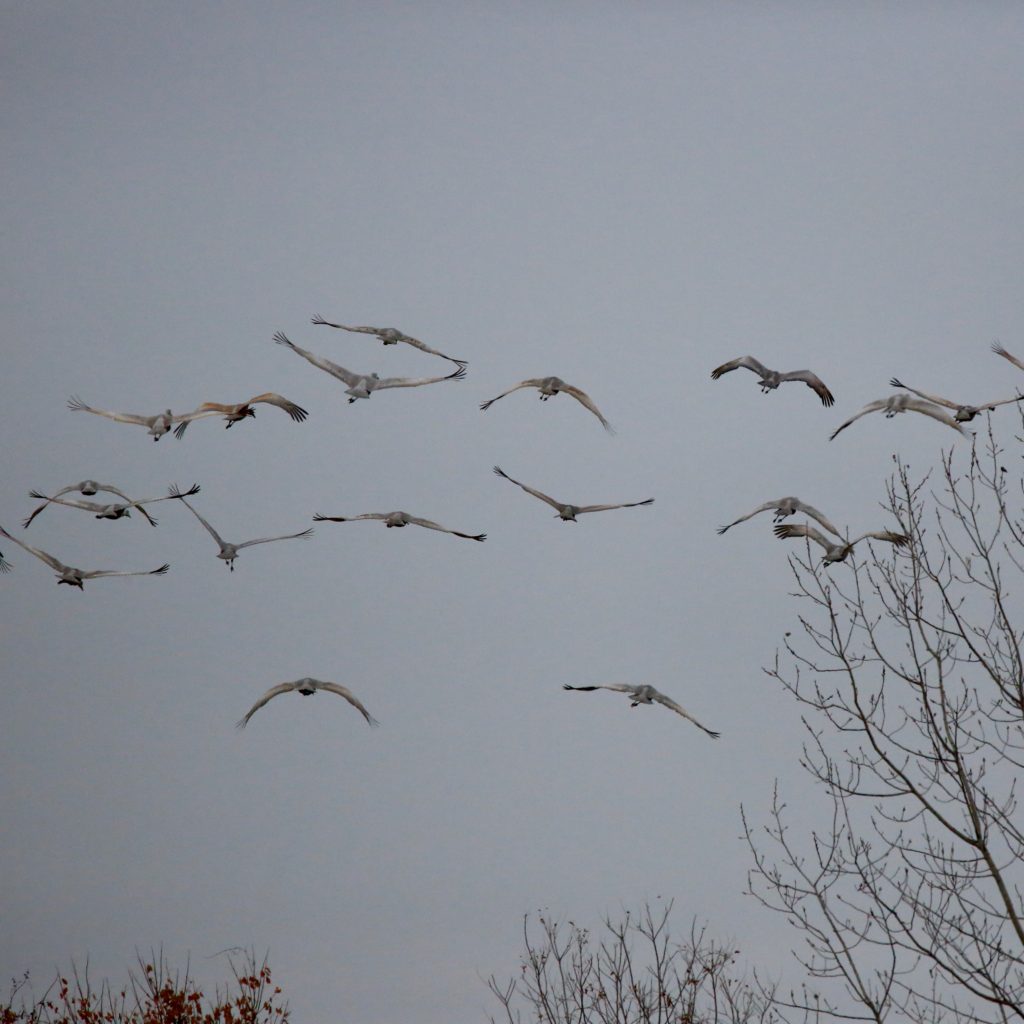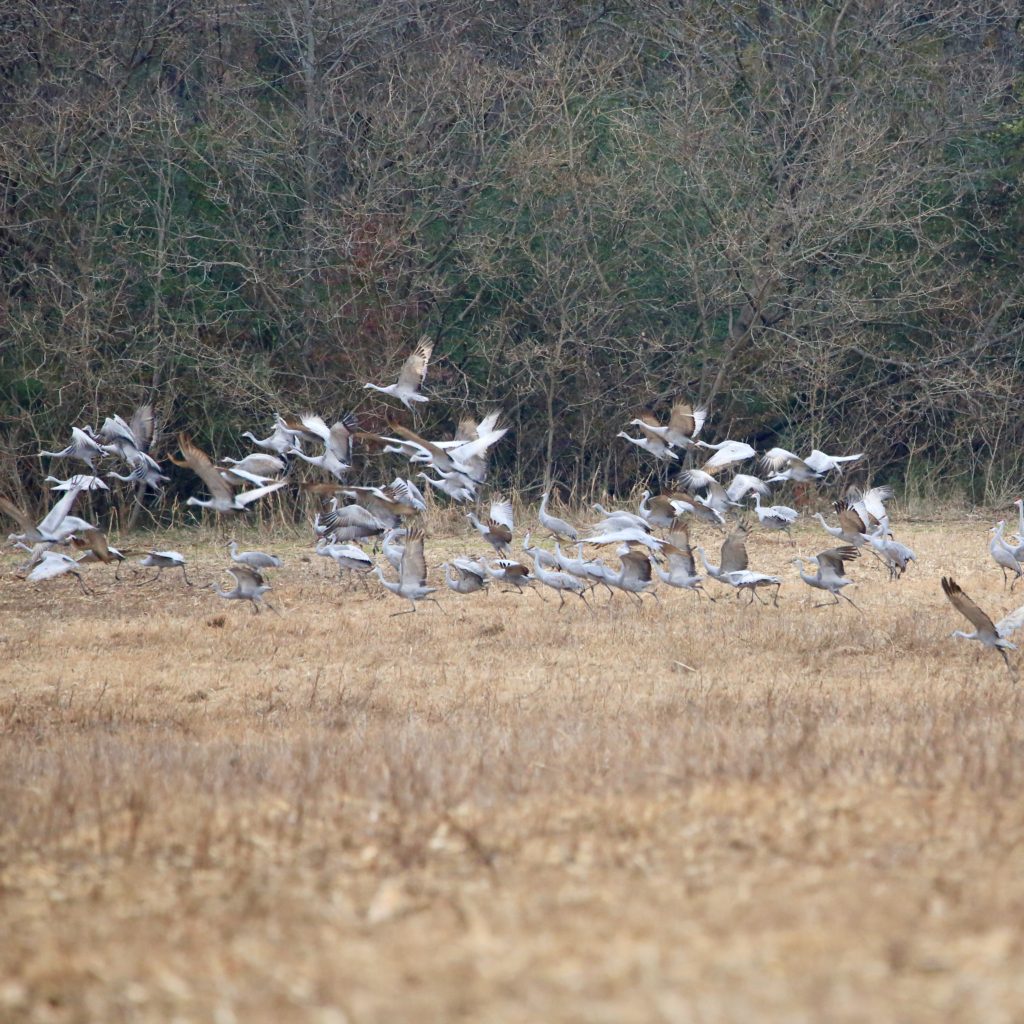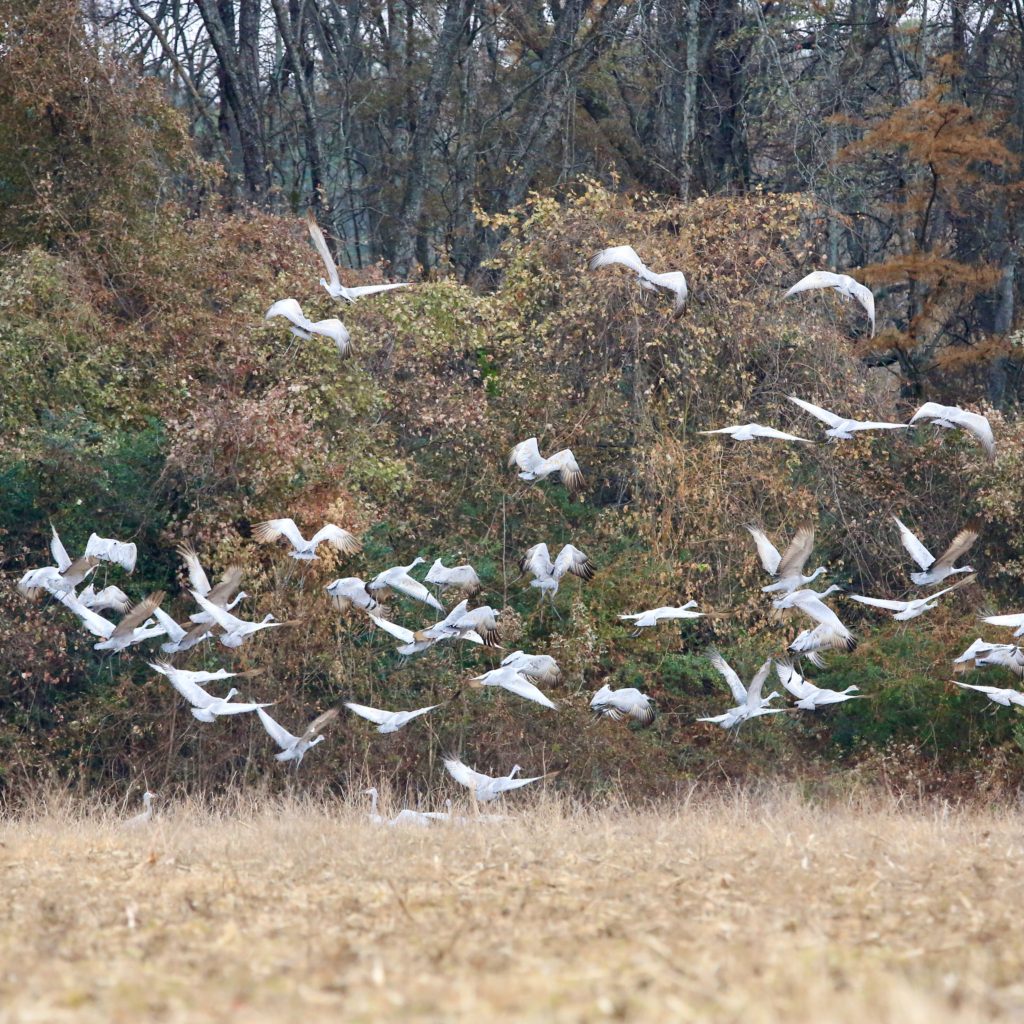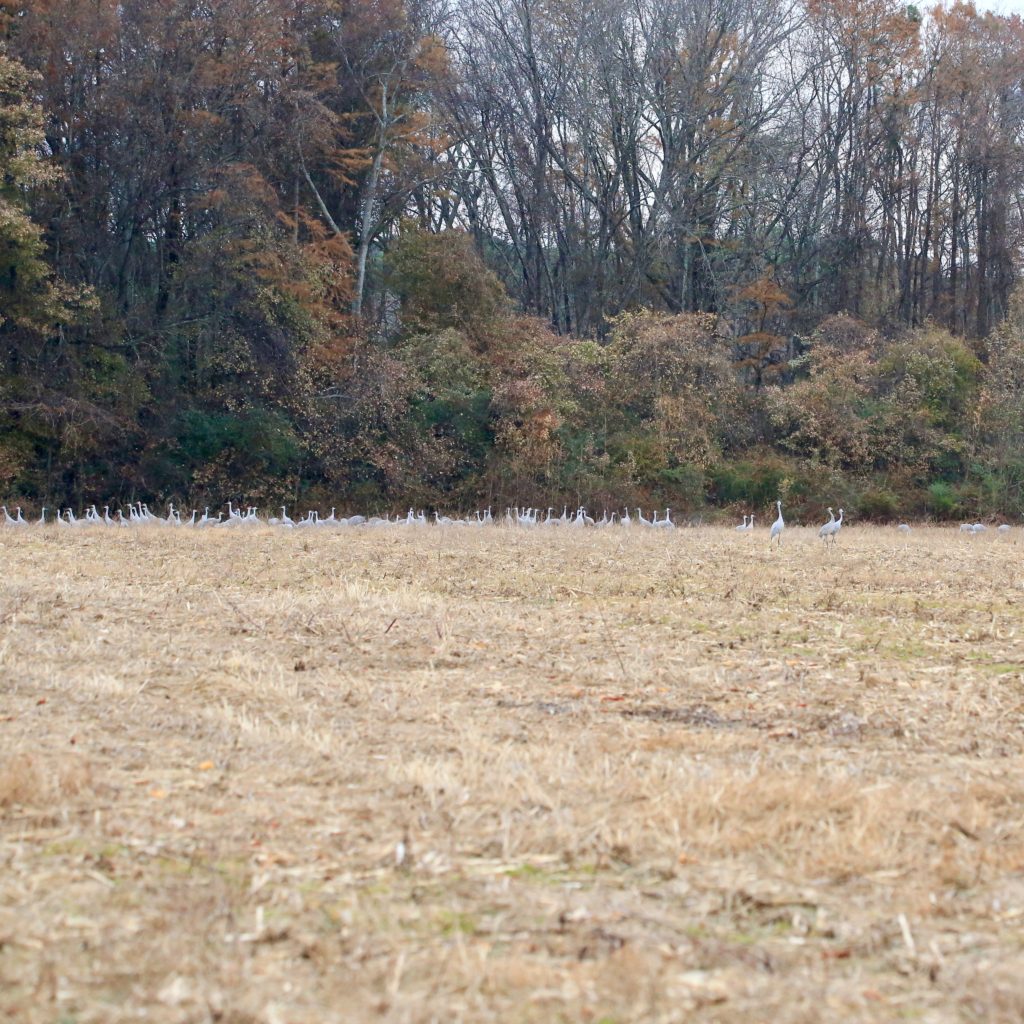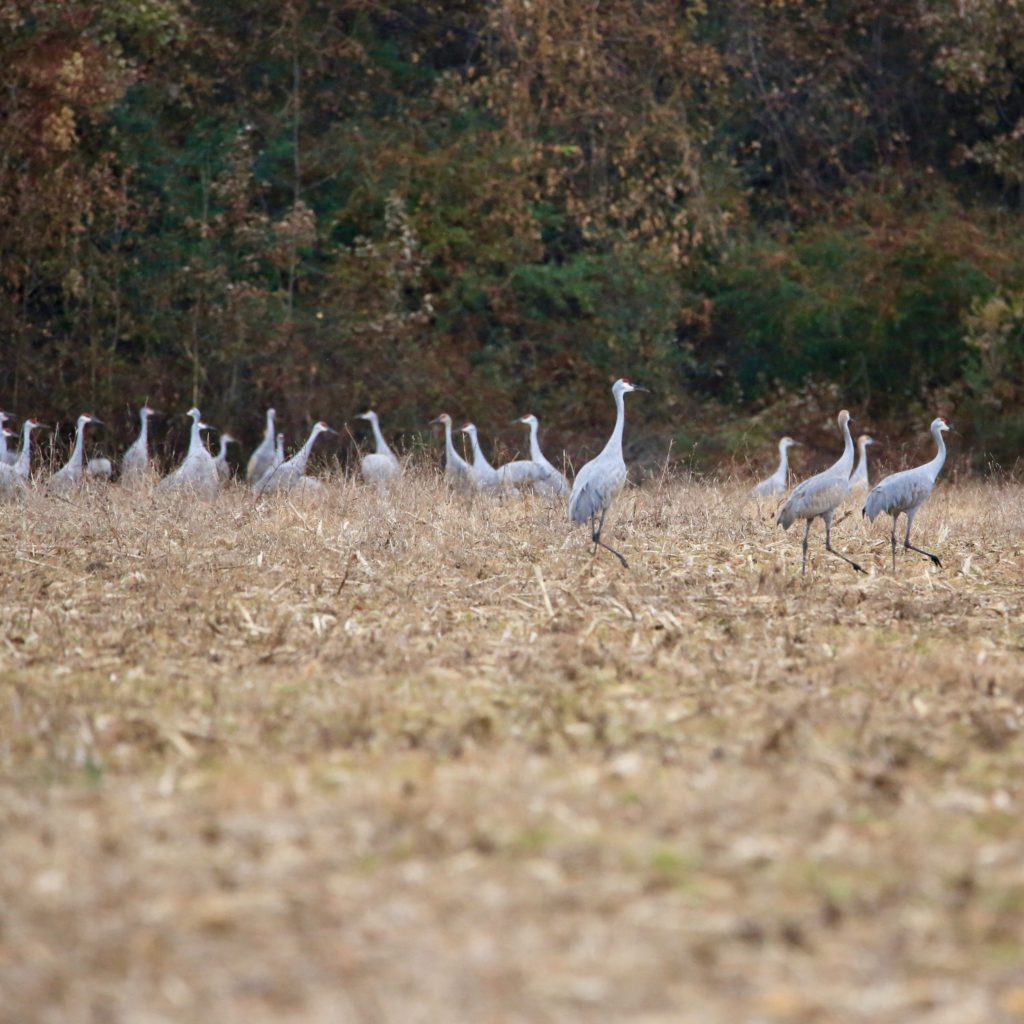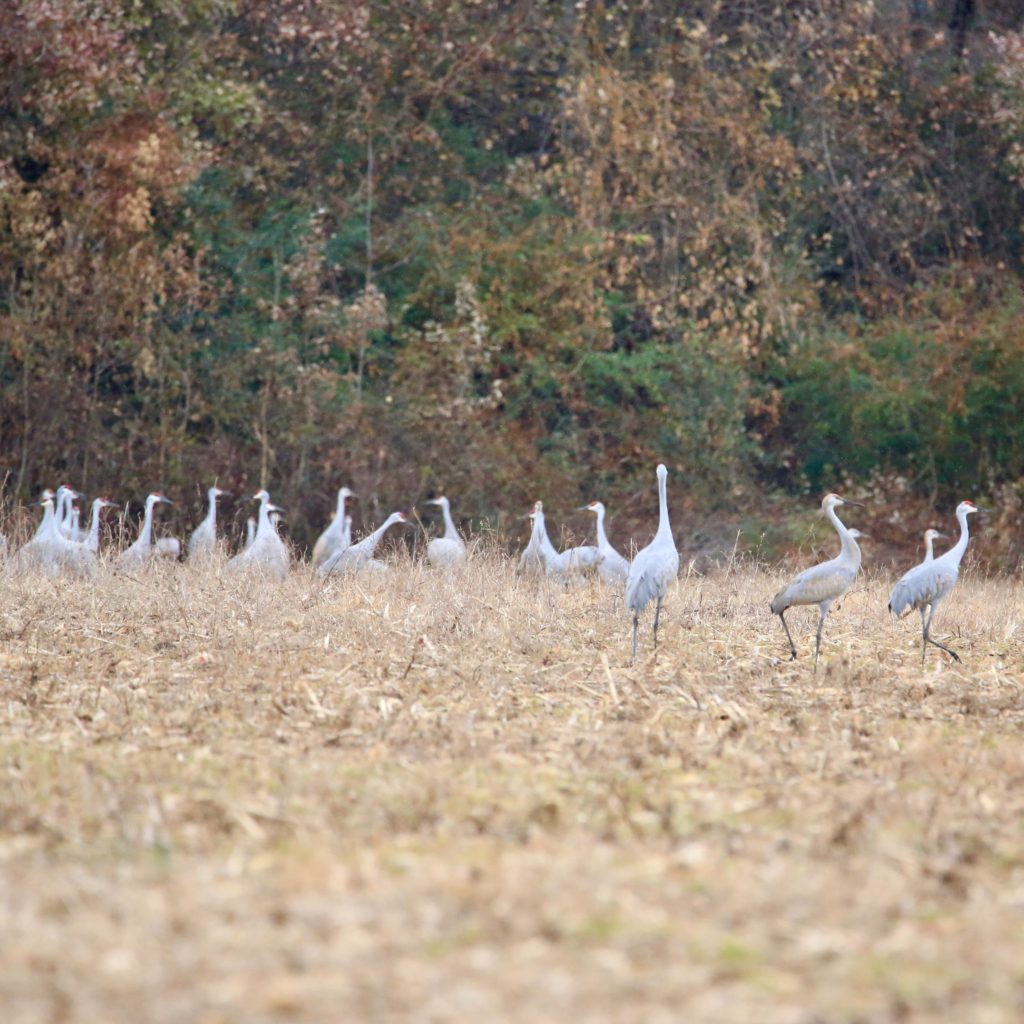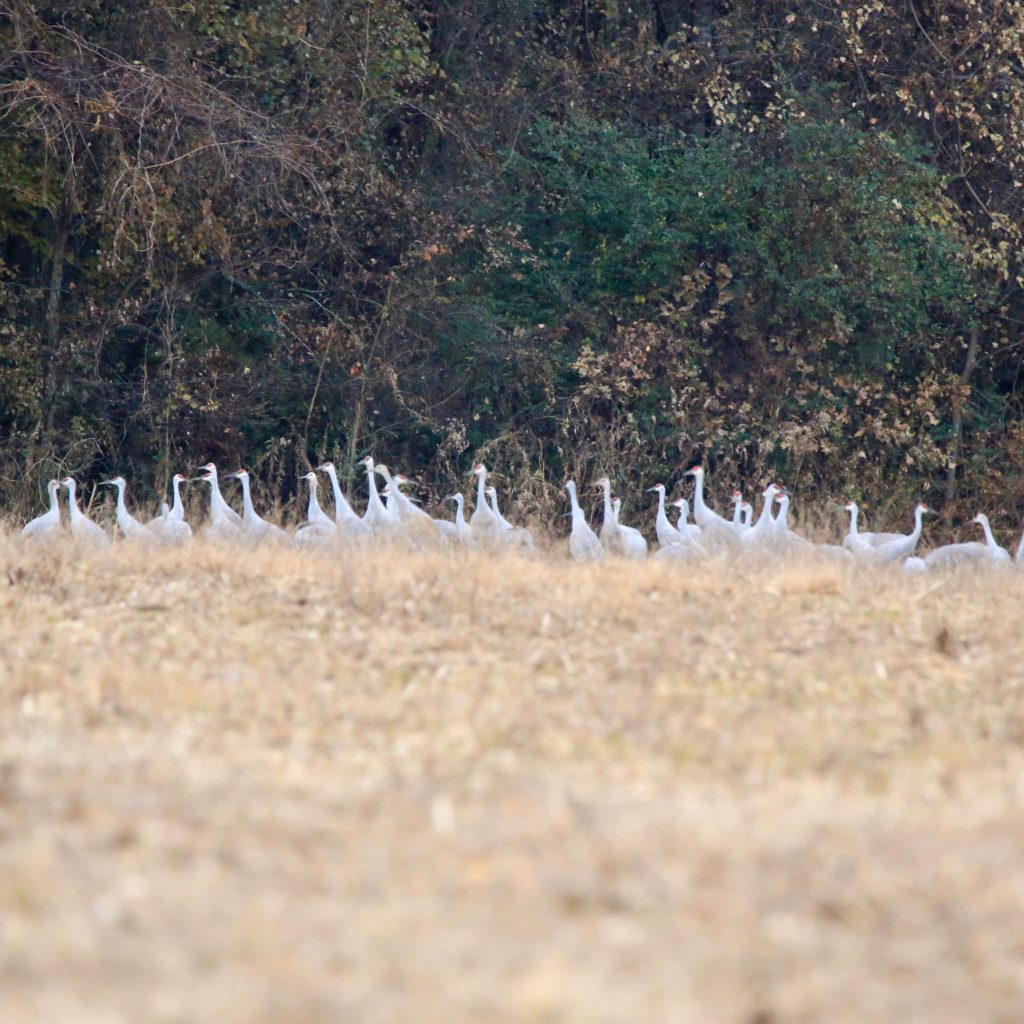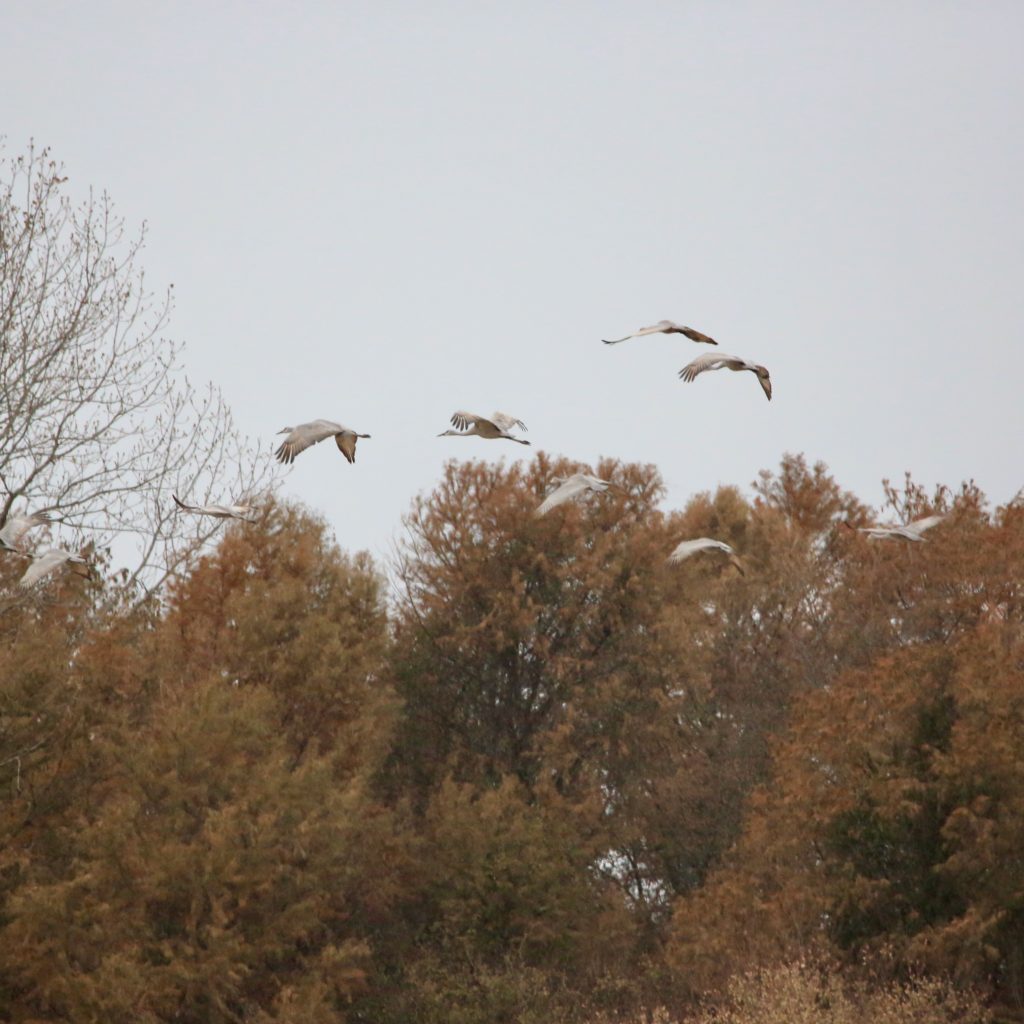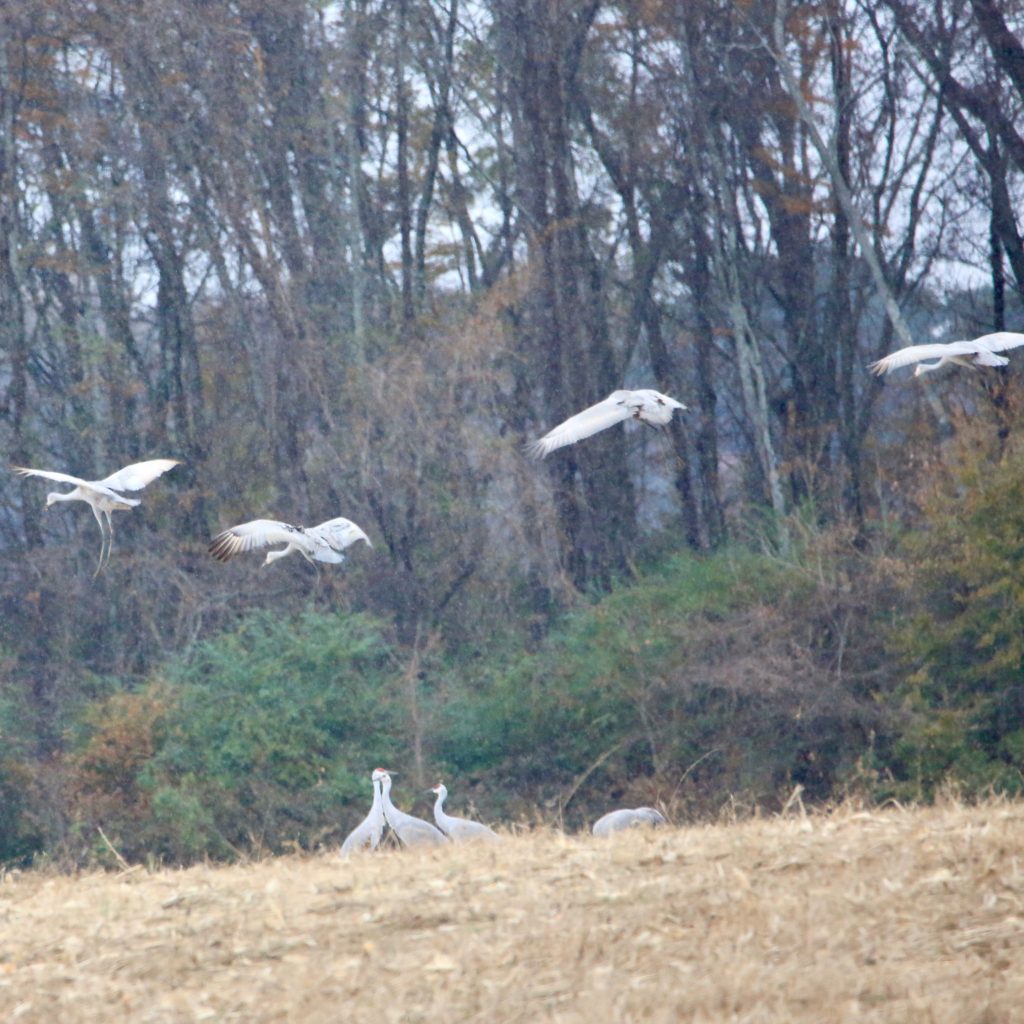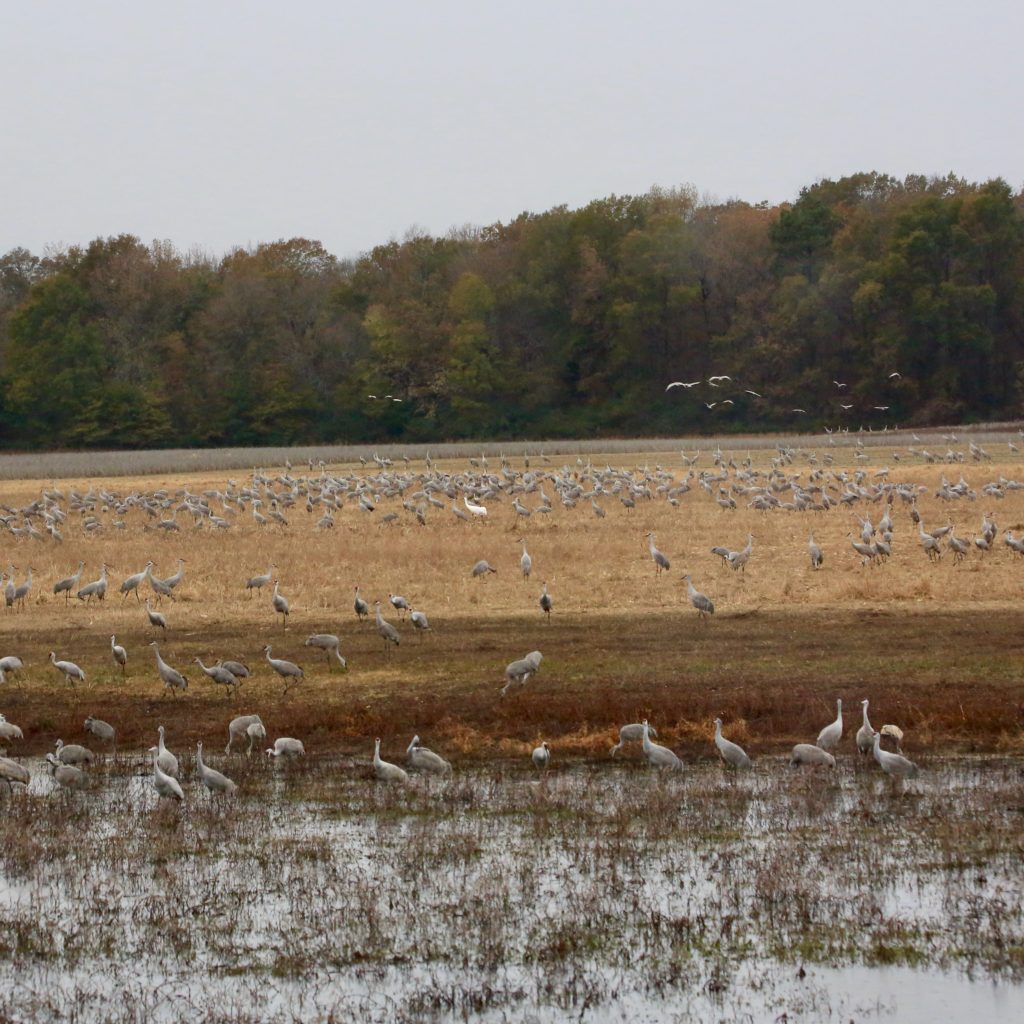
Sandhill Crane
A Sandhill Crane is a fun bird to see while bird watching. Below are some tips to help you identify Sandhill Cranes. We have also put together a list of fun Sandhill Crane t-shirts, Sandhill Crane bird patches, bird houses, bird feeders, binoculars, stickers and other fun bird watching items.
About Sandhill Cranes
The crane is named after the Nebraska Sandhills. The place is an important stopover for the migratory lesser sandhill cranes. It is one of the largest cranes in North America and Northeastern Siberia.
Description and Identification
It is possible to identify Sandhill Cranes by their red foreheads, white cheeks and long, dark spiked beaks. They also have enormous body tapers with a thin-long neck along with a short feathered tail that helps to travel. There will be grey underparts and reddish-brown upperparts for the baby Sandhill cranes. Their big wingspan makes them professional birds that soar. The wingspan for male and female Sandhill Cranes is different. And there are diverse sizes of each subspecies. Also, they have a special trumpet call which is very deep.
Sandhill Crane Size
Males: Length: 80 to 122 cm, Weight: 4.57 kilograms, Wingspan: 165 to 230 cm
Females: Length: 80 to 122 cm, Weight: 4.02 kilograms, Wingspan: 165 to 230 cm
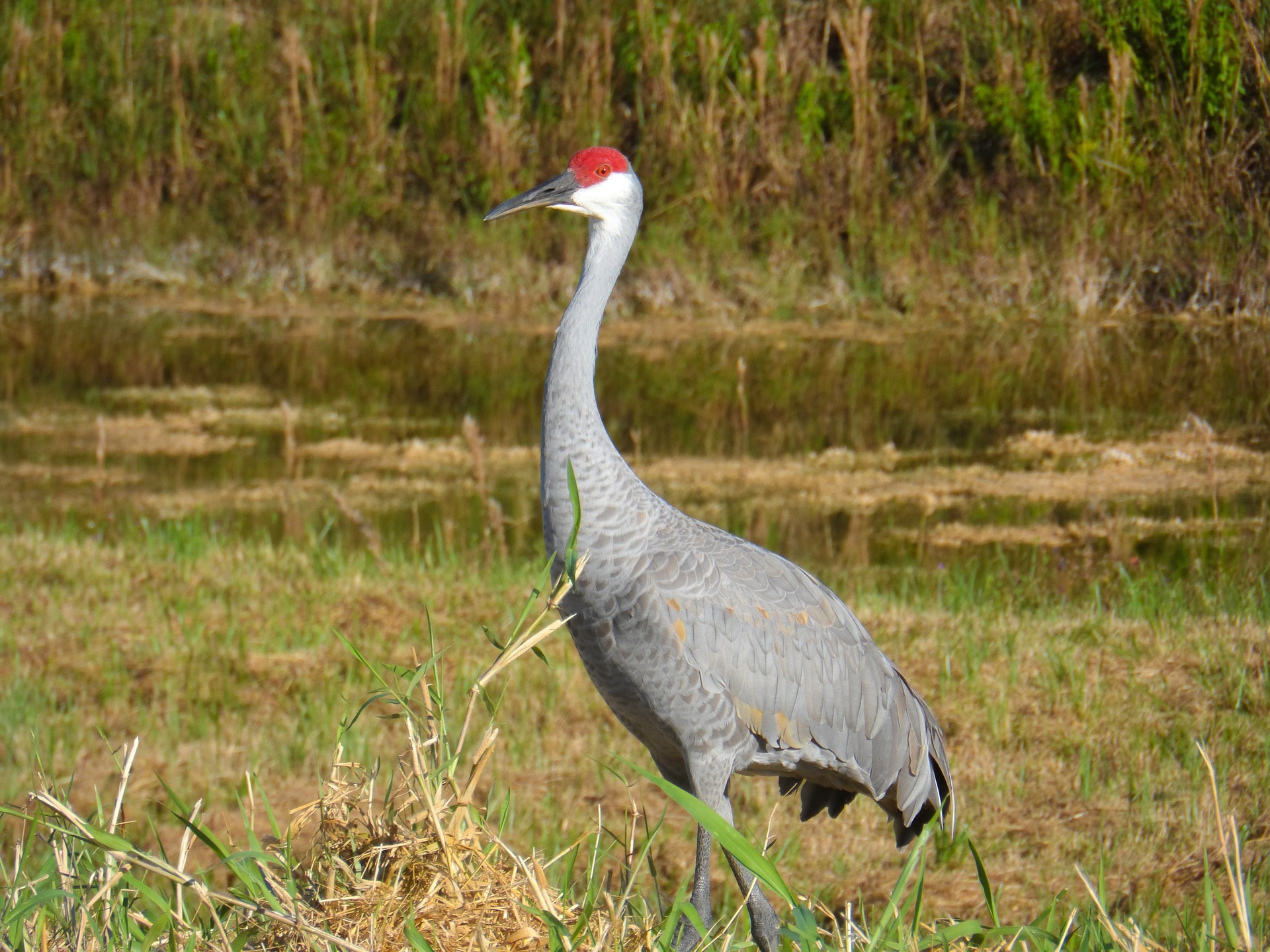
Sandhill Crane Color Pattern
The adult cranes are grey and their highlights are mostly centered on their faces. Their foreheads are red and they have white cheeks and long and dark bills.
Juveniles are reddish-brown on the upper sides and have gray underparts.
Like most cranes, during flight, the cranes pull their legs straight behind them and their necks forward to achieve a streamlined position for easier flying.
What Sandhill Crane Eat
Sandhill Cranes are a kind of adaptable feeders. Depending on what’s available, they can change their diet. We may assume that, in nature, they are omnivores. Plants and grains are most commonly consumed, but they also dine on invertebrates or even small rodents, amphibians, and reptiles. Unlike other wading birds, fish is not eaten by Sandhill cranes. Most of them prefer grain, cottonseed, wheat, and other cultivated crops would also be eaten by them. Waste corn can be considered as an essential part of their diet while preparing for migration.
Sandhill cranes are herbivores, feeding on a variety of plants depending on their availability. Their diet ranges from seeds, corn, wheat, berries, sorghum, and cotton seeds. However, northern races of the sandhill cranes feed on amphibians, small reptiles, and insects.
Where Sandhill Cranes Live and Their Habitat
Sandhill cranes prefer freshwater wetlands, including marshes, wet grasslands and river basins to live. Habitat varies with the area, but typically nests, either in open grasslands or surrounded by woodland, around marshes or bogs. On the marshy tundra, the northernmost bird’s nest. Often around open prairie, farmlands, river valleys, in migration and winter. The subspecies of Sandhill spend winters in the south and summers at their breeding grounds. In the early spring, they begin the migration to their breeding grounds. During the late spring, summer, and early fall, sandhill cranes can be seen hovering around the same places. Some breed in Minnesota, Wisconsin, and Michigan. Others breed in Oregon, Idaho, and Alaska.
The cranes dwell in areas near water bodies, usually around rivers, lakes or some swamps. In winter, they migrate to less cold regions referred to as “winter sites”.
Range and Migration

Sandhill Cranes are dispersed all over North America. They also stretch to Mexico and Cuba in the south. When discussing their migration they have a beautiful model of migration. We can see the migratory taxonomic category of Sandhill Cranes at Siberia in the Western region. In Alaska, we will see Sandhill Cranes in 2 distinct teams, one is at the Yukon-Kuskokwim Delta and another is scattered across northern and western sides of the coastal region. During the winter season, these cranes migrate towards California’s Central natural depression, Texas and Florida. During spring, around 600,000 Sandhill Cranes create their annual migration through the Central route, in a single stretch of seventy-five miles on Central Flyway, along with Nebraska. Non-migratory cranes are the three Sandhill crane subpopulations, which are the Mississippi Sandhill Crane, the Florida Sandhill, and the Cuban Sandhill crane.
Sandhill Crane Behavior
They are largely social birds and can live in groups of up to 10,000 birds during winter. This group is made up of mating pairs or family groups.
During breeding season, both of the mating pairs actively participate in the building of nests. The nests are built in marshy, damp areas. The pair raises one brood every year. Both parents incubate the eggs for 30 days and after hatching, the younglings are able to leave the nest in a day.
Being ground dwellers, the cranes are preyed on by many predators including, alligators, crocodiles, foxes, wolves, coyotes, and great horned owls. These can take down both the adults and the younglings.
Nesting
While addressing Sandhill Cranes nesting style and preferences generally they choose to nest in small, deserted swamplands or within about 300 yards of the edges of larger ones, such as marshes, morasses, and swales. Their preferred areas are those in which they can rise with vegetation in standing water, but some of them also choose some dry land for nesting. An unknown fact that lies in nesting, is whether males or females choose the nesting location. Typically, the females stand and arrange the material on the mound. Nests can be 30 to 40 inches wide and 4 to 6 inches high; they are larger than those constructed on dry land; those built over water.
Ornithology
Bird Watching Academy & Camp Subscription Boxes
At Bird Watching Academy & Camp we help kids, youth, and adults get excited and involved in bird watching. We have several monthly subscription boxes that you can subscribe to. Our monthly subscription boxes help kids, youth, and adults learn about birds, bird watching, and bird conservation.
Bird Watching Binoculars for Identifying Sandhill Cranes
The most common types of bird watching binoculars for viewing Sandhill Cranes are 8×21 binoculars and 10×42 binoculars. Bird Watching Academy & Camp sells really nice 8×21 binoculars and 10×42 binoculars. You can view and purchase them here.
Sandhill Crane T-shirts
If you love the Sandhill Crane you should purchase a Bird Watching Academy & Camp T-shirt. To help support bird conservation we donate 10 percent to bird conservation activities.
Sandhill Crane Iron On Patches
Kids, Youth, and Adults love to collect our Bird Watching Academy & Camp iron on patches. Our bird watching patches help you keep track of the birds you have seen an identified. You can also display the patches on our Bird Watching Academy & Camp banners.
The Sandhill Crane is a great iron on patch to start your collection with. The patches are durable and can be sewn on or ironed on to just about anything.
Sandhill Crane Stickers
Stickers are a great way for you to display your love for bird watching and the Sandhill Crane. We sell a monthly subscription sticker pack. The sticker packs have 12 bird stickers. These sticker packs will help your kids learn new birds every month.
Bird Feeders For Sandhill Crane
There are many types of bird feeders. Here are our favorite bird feeders for your backyard. We use all of these bird feeders currently. Kids will have a great time watching birds eat at these bird feeders. Using this collection of bird feeders will provide a wide variety and many types of birds.
Best Bird Houses for Sandhill Crane
There are many types of bird houses. Building a bird house is always fun but can be frustrating. These 4 bird houses have become our favorites. Getting a bird house for kids to watch birds grow is always fun. We spent a little extra money on these bird houses but they have been worth the higher price and look great.



